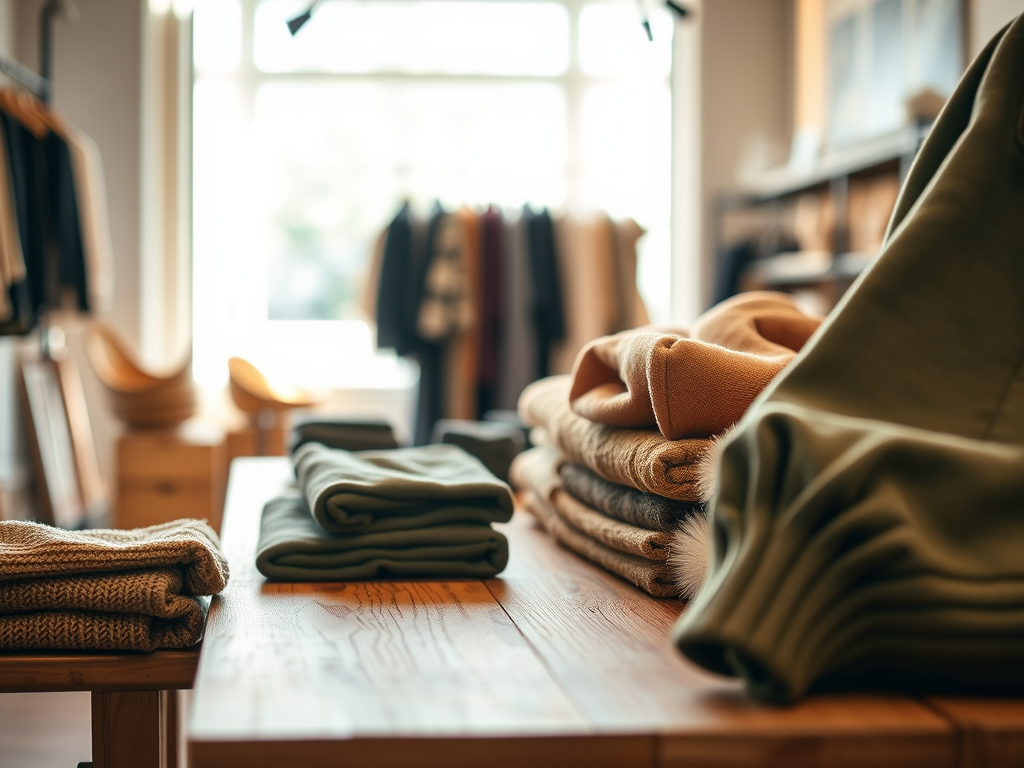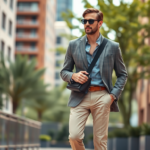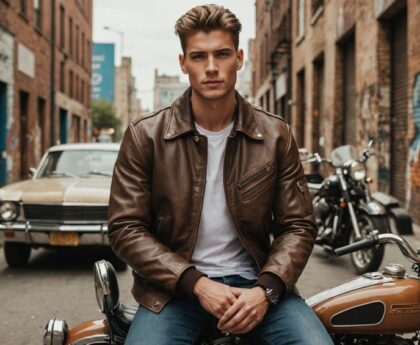Urban Outfitters has emerged as a notable player in the fast fashion sector, captivating a demographic that craves both style and innovation. This retailer doesn’t just sell clothing; it markets a lifestyle, appealing to the young, urban consumer who values uniqueness. As the lines between fashion and lifestyle continue to blur, Urban Outfitters stands at a crossroads. What does that mean for the future of fast fashion? We delve into the company’s structure, marketing strategies, and the wider implications for the retail industry in our analysis.
The fast fashion phenomenon has transformed the way consumers shop, emphasizing rapid production and trend-responsive designs. Urban Outfitters has successfully tapped into this model, catering to the desires of a generation that favors immediacy over sustainability. Still, it faces the dual challenge of maintaining consumer loyalty while addressing pressing ethical concerns related to environmental impact and labor practices. This case study explores how Urban Outfitters navigates these complexities while positioning itself within the fast fashion landscape.
Urban Outfitters: Company Background

Founded in 1970 by Scott Belair and others, Urban Outfitters was initially targeted at university students in Philadelphia. Over the decades, the brand has evolved significantly, currently boasting a diverse array of product lines that include home goods, accessories, and more. Their stores serve as cultural hubs that offer an immersive shopping experience, making it distinct from typical fast fashion outlets. With a reputation built on youthful energy, Urban Outfitters tends to attract individuals aged 18 to 30, making them a staple in modern retail.
Throughout its history, the company has continuously reinvented itself, focusing on trends that resonate with its customer base. Urban Outfitters operates around 200 stores globally, each meticulously designed to reflect the local vibe of its surroundings. This localized approach not only enhances the shopping experience but also ensures that the company remains relevant within a fast-changing market. Some of the key product categories include:
- Apparel for men and women
- Home decor
- Beauty products
- Accessories and gifts
- Vintage items
The Fast Fashion Model

The fast fashion business model revolves around the quick turnaround of designs from the runway to retail. Unlike traditional retailers, which may take months to develop and distribute new styles, fast fashion brands aim to shorten this cycle drastically. Urban Outfitters exemplifies this approach, offering fresh inventory frequently, thus enticing customers to shop more often. This creates a sense of urgency among consumers, who want to keep up with the latest trends. They might think, “If I don’t buy it now, I might miss out!”
However, this method raises numerous issues, particularly surrounding sustainability and ethics. The production cycles often lead to overconsumption and significant waste. As consumers increasingly become aware of these implications, brands like Urban Outfitters need to balance fast trends with responsible practices. Below is a comparison of fast fashion and traditional retail models:
| Aspect | Fast Fashion | Traditional Retail |
|---|---|---|
| Production Speed | Weeks | Months |
| Price Point | Low | Higher |
| Trend Responsiveness | High | Low |
| Sustainability Focus | Low | Varies |
Urban Outfitters’ Position in the Fast Fashion Market
Urban Outfitters has carved out a niche within the competitive fast fashion sector, differentiating itself through unique selling propositions that resonate with its target audience. While larger brands like Zara and H&M dominate the market, Urban Outfitters adopts an eclectic approach, mixing vintage-inspired clothing with modern trends. This strategy appeals to customers looking for more than just clothes; they seek an identity, a sense of belonging to a lifestyle that mirrors their values and aspirations.
In terms of market share, Urban Outfitters faces stiff competition but remains relevant by continuously engaging its demographic. Strategies include utilizing social media platforms and employing influencers to connect with potential buyers. This engagement is crucial, as it builds a community around the brand that encourages loyalty. The retail environment today demands more than just quality products; it requires a narrative. Customers appreciate being part of a story, and Urban Outfitters has effectively provided that.
The Environmental and Ethical Impact of Fast Fashion
One cannot discuss fast fashion without addressing the significant environmental and ethical challenges it poses. The culture of disposability accompanying fast fashion leads to increased waste, with countless garments ending up in landfills. Urban Outfitters acknowledges these issues and has initiated programs aimed at addressing them. For instance, they have incorporated sustainable materials into some of their collections, reflecting a growing consumer appetite for eco-friendly products.
Moreover, consumer awareness has prompted Urban Outfitters to respond more proactively to ethical concerns. They have established transparency in their supply chain, ensuring that labor practices meet acceptable standards. Below is a list of sustainability initiatives implemented by Urban Outfitters:
- Introduction of eco-friendly clothing lines
- Sourcing materials from sustainable suppliers
- Engagement in community recycling programs
- Collaboration with ethical brands
Marketing Strategies of Urban Outfitters
Adept marketing strategies have cemented Urban Outfitters’ position in the fast fashion landscape. Their brand leverages an extensive online presence, engaging consumers through visually appealing content tailored for platforms such as Instagram and TikTok. These tactics not only highlight products but also cultivate an aesthetic that resonates with the target demographic. Influencer collaborations further enhance this connection, allowing the brand to reach potential customers organically.
The innovative use of pop-up shops and events reflects Urban Outfitters’ commitment to creating memorable experiences that go beyond traditional retail. By fostering community engagement and offering exclusive items, they tap into the emotional connections consumers have with brands. The importance of these connections cannot be understated, particularly in the face of shifting preferences towards more conscious consumerism. Ultimately, fostering a vibrant brand community has proven essential for driving sales and boosting customer fidelity.
Challenges Facing Urban Outfitters
Despite its successes, Urban Outfitters is not immune to the challenges plaguing the retail industry today. The rise of e-commerce has disrupted traditional shopping habits, forcing brick-and-mortar stores to reevaluate their strategies. Consumers increasingly prefer the convenience of online shopping, presenting a hurdle to Urban Outfitters as it tries to retain in-store traffic. As this shift unfolds, the company must adapt its supply chain and fulfillment processes to stay competitive.
Changing consumer preferences present another significant challenge for Urban Outfitters. As shoppers become more mindful of their purchases, they often prioritize quality and sustainability over quantity. This shift necessitates a rethinking of product offerings and marketing messages to align with evolving consumer values. Here are some other potential risks associated with the fast fashion model:
- Negative publicity surrounding environmental issues
- Increased competition from sustainable brands
- Fluctuating economic conditions influencing consumer spending
Conclusion
In summary, Urban Outfitters serves as a fascinating case study within the realm of fast fashion. Through its innovative marketing strategies, eclectic product offerings, and growing sustainability initiatives, the brand has managed to carve a significant niche in a crowded market. However, the future is uncertain; the pressures of sustainability, consumer behavior shifts, and economic challenges are ongoing realities. As consumers demand more transparency and responsibility from brands, Urban Outfitters must navigate this evolving landscape with agility and foresight. Ultimately, the company’s ability to adapt will determine its place in the future of fast fashion.
Frequently Asked Questions
- What is fast fashion?
Fast fashion refers to a retail strategy that involves producing clothing rapidly and in response to current trends, allowing for frequent collections that appeal to consumers at lower prices. - How does Urban Outfitters differentiate itself from other fast fashion brands?
Urban Outfitters positions itself through a unique blend of lifestyle branding, a curated product mix, and experiential retail environments, targeting a young, trend-sensitive demographic. - What sustainability efforts has Urban Outfitters implemented?
Urban Outfitters has launched initiatives such as eco-friendly product lines, sustainable sourcing practices, and participation in campaigns aimed at reducing waste and promoting ethical labor. - What are the main challenges Urban Outfitters faces today?
Urban Outfitters faces significant challenges including increased competition from online retailers, changing consumer preferences towards sustainability, and the necessity to adapt to economic fluctuations.





